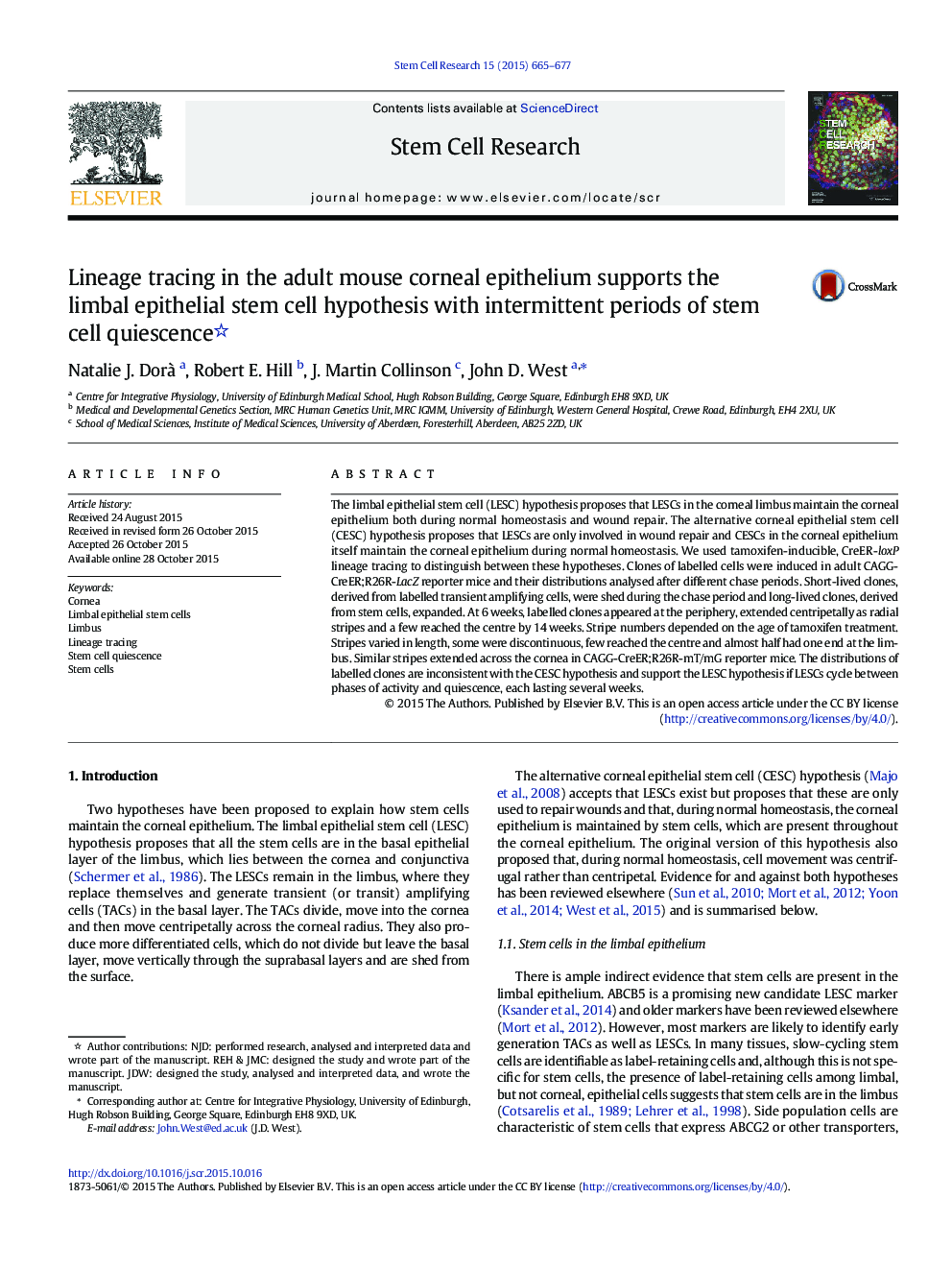| Article ID | Journal | Published Year | Pages | File Type |
|---|---|---|---|---|
| 2093911 | Stem Cell Research | 2015 | 13 Pages |
•We used lineage tracing to evaluate alternative corneal epithelial stem cell models.•Clones emerged from the periphery and extended centripetally as radial stripes.•This implies that active stem cells are at the periphery, not throughout the cornea.•Labelling patterns suggested stem cells cycle through quiescent periods.•More labelled clones were induced by treating younger mice.
The limbal epithelial stem cell (LESC) hypothesis proposes that LESCs in the corneal limbus maintain the corneal epithelium both during normal homeostasis and wound repair. The alternative corneal epithelial stem cell (CESC) hypothesis proposes that LESCs are only involved in wound repair and CESCs in the corneal epithelium itself maintain the corneal epithelium during normal homeostasis. We used tamoxifen-inducible, CreER-loxP lineage tracing to distinguish between these hypotheses. Clones of labelled cells were induced in adult CAGG-CreER;R26R-LacZ reporter mice and their distributions analysed after different chase periods. Short-lived clones, derived from labelled transient amplifying cells, were shed during the chase period and long-lived clones, derived from stem cells, expanded. At 6 weeks, labelled clones appeared at the periphery, extended centripetally as radial stripes and a few reached the centre by 14 weeks. Stripe numbers depended on the age of tamoxifen treatment. Stripes varied in length, some were discontinuous, few reached the centre and almost half had one end at the limbus. Similar stripes extended across the cornea in CAGG-CreER;R26R-mT/mG reporter mice. The distributions of labelled clones are inconsistent with the CESC hypothesis and support the LESC hypothesis if LESCs cycle between phases of activity and quiescence, each lasting several weeks.
Graphical abstractFigure optionsDownload full-size imageDownload high-quality image (185 K)Download as PowerPoint slide
